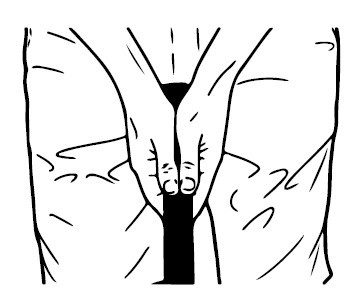One of the fastest ways to lower your score and reduce your handicap is to dedicate some of your practice time each week to putting. Just like all aspects of golf, consistency is key and having good basics are essential.
what are some good basics of putting?
It is difficult for amateurs to know what to do as we see professionals using a mixture of different putting styles. From different postures, different stances, different grips and different putter designs. However they are all looking for the same thing, a stroke which is repeatable and a putter face which doesn’t rotate much.
what is a repeatable stroke?
I prefer when students to have the same backwards and forwards length when putting. There are two major benefits to this, one is that it ensures the student does not decelerate through impact, and the second is that it helps to reduce hand action. The feeling of swinging the putter head the same length on backswing and follow through needs to be control by the bigger muscles of your body. This means that you want to feel like your shoulders are slightly turning which controls your arms and in turn the putter. If the stroke is repeatable we then need to make sure that the putter face doesn’t rotate too much, if it does it will result in the putt being pushed and pulled off line. To do this we need to make sure we are gripping the putter correctly. As Coach Stephen said “there are many different ways to grip a putter, the one thing that they all have in common is they eliminate hand action and reduce clubface rotation”.

Standard grip Very similar to the grip used for your full swing. The main difference is that the putter grip is placed in the palms of the hands rather than your fingers. This is the grip used by most golfers and is great for all levels. The key is to not allow one hand to be more dominant than the other.
Cross handed This is a good option to consider if you feel like you have too much hand action. The left hand is placed below the right hand. This changes the roll of the hands in the stroke with the right hand now becoming less active. I would recommend this for anyone who feels like their putting is good but need a little more consistency.


Modified grip This grip was originally used with long putters, the right hand is placed against the side of the putter grip with the thumb and index finger supporting the grip. The left hand is placed at the top of the grip in a neutral position. This is a great option is you feel like you are unable to control your hands in the stroke.
The oversized grip You will need to place both thumbs on the shaft side as this will balance your hands on the putter and level your shoulder. I recommend this grip if you are someone who struggles with pushing your putts to the right. Finally, these grips can be modified further to help you add stability to your stroke by placing the index finger in a downwards position.

Whichever grip you decide is best for you, make sure you spend some time practicing it before heading out to the course. Building confidence in practice is a key to building confidence whilst playing.















